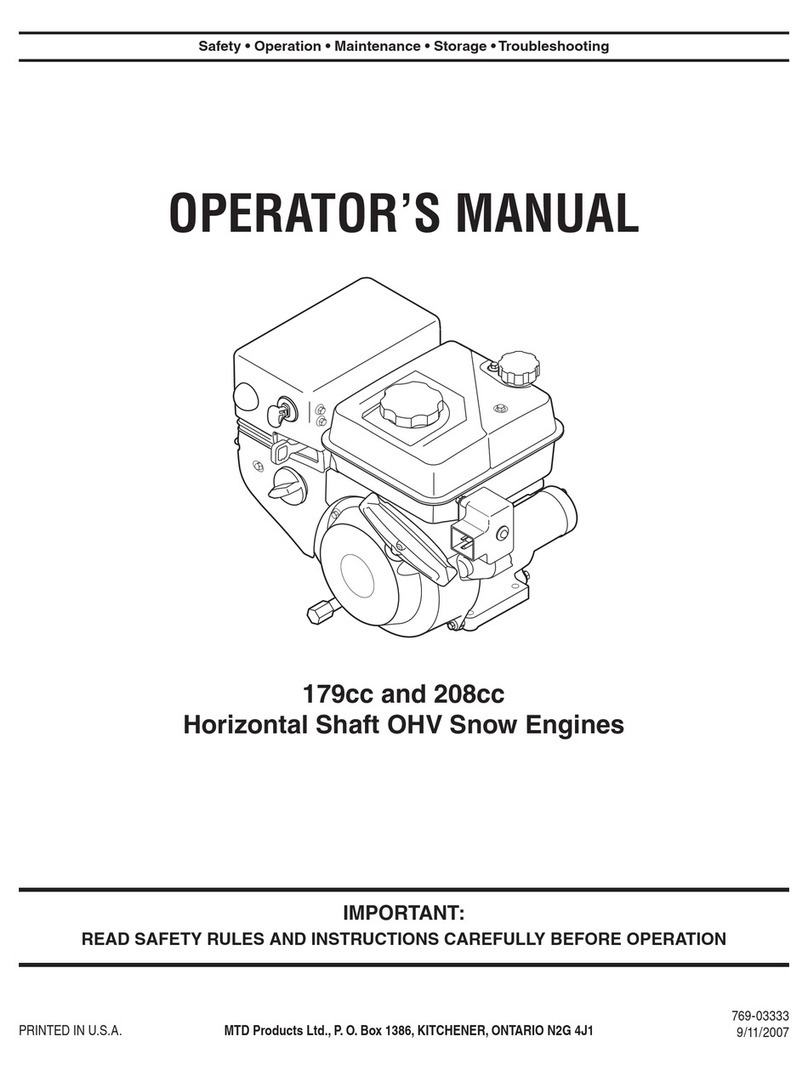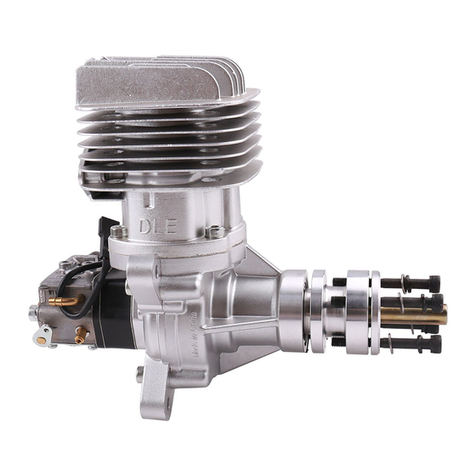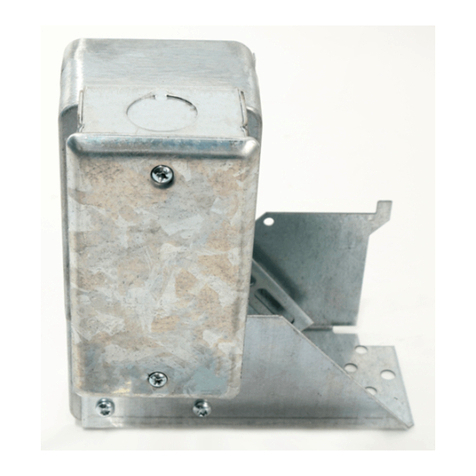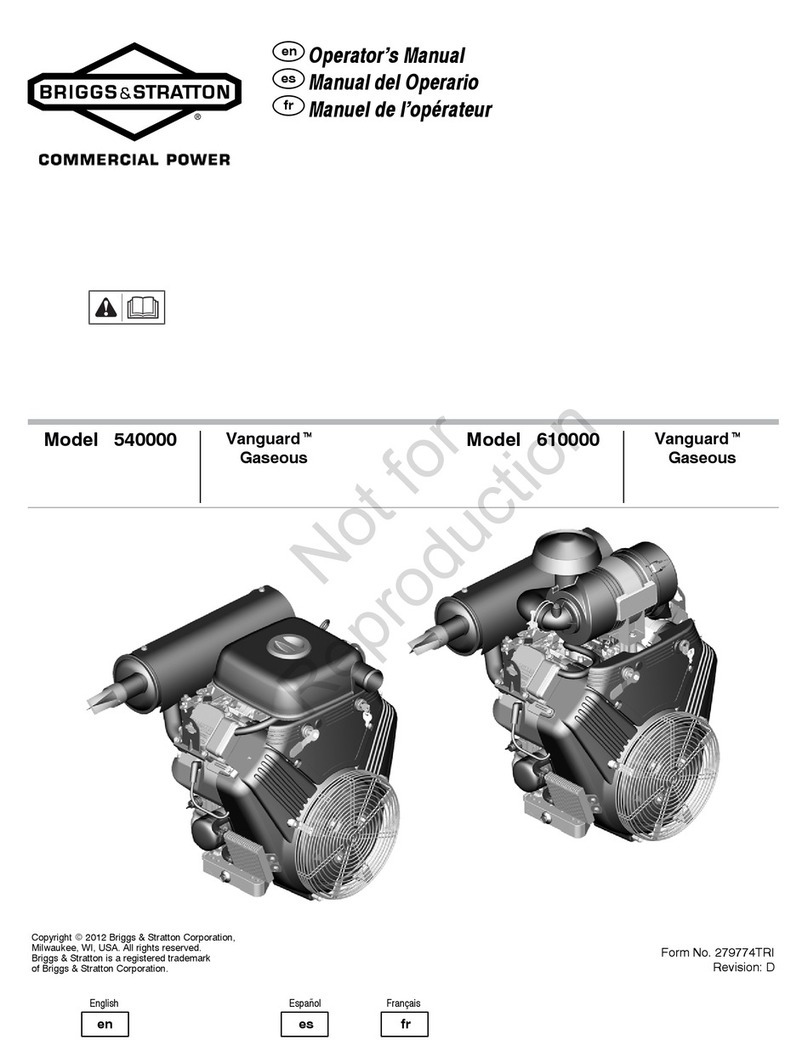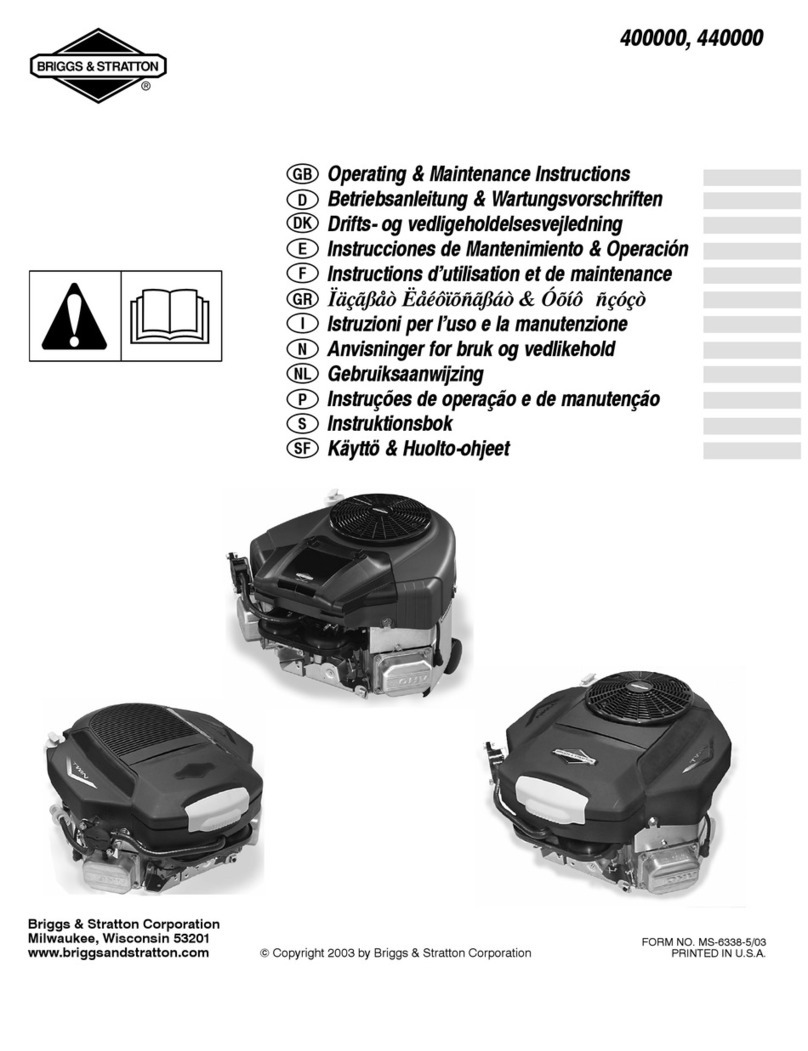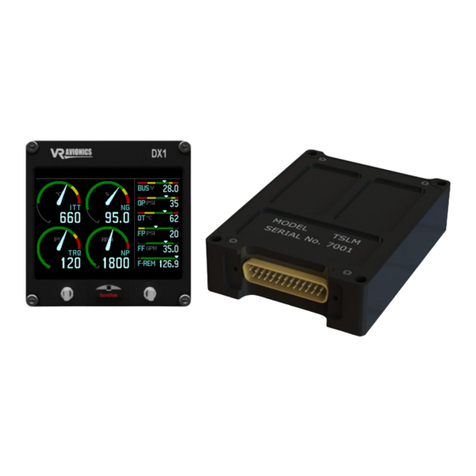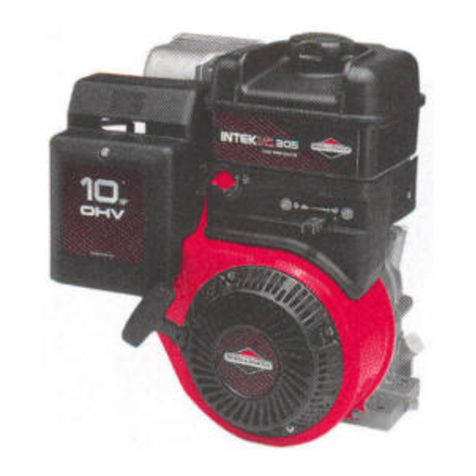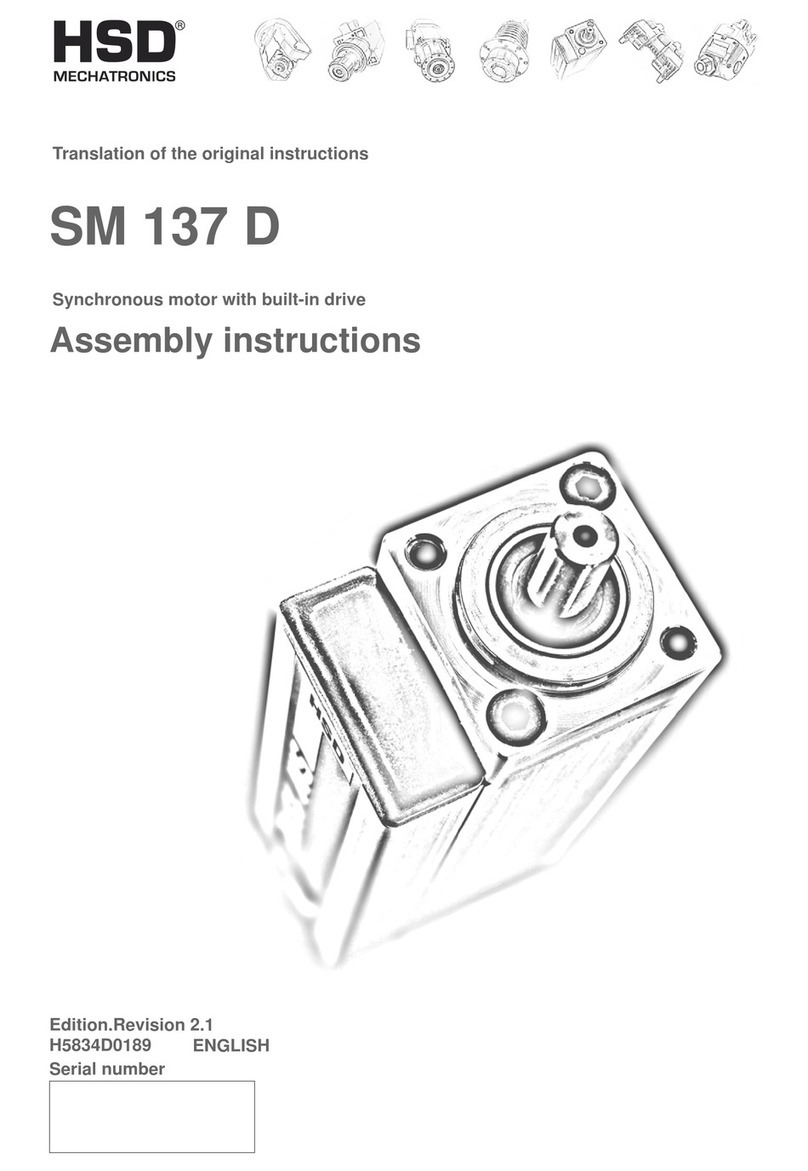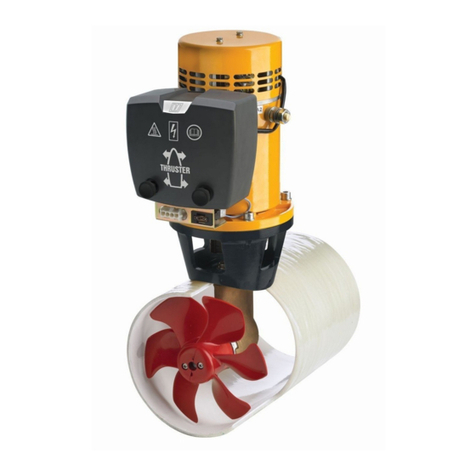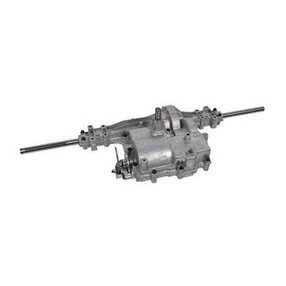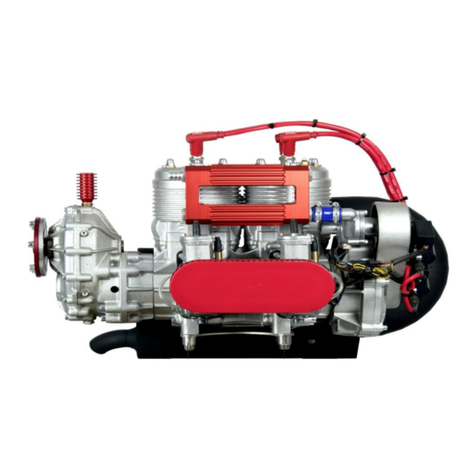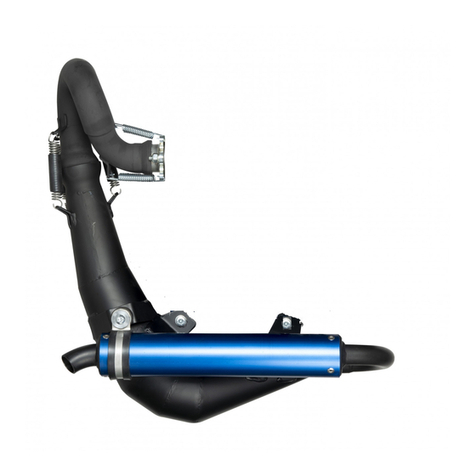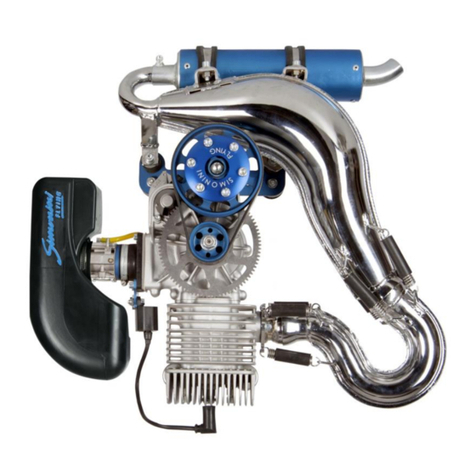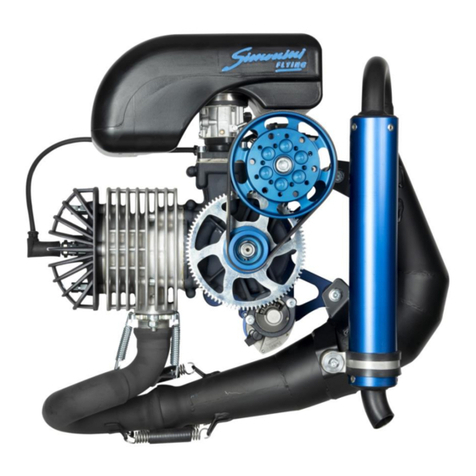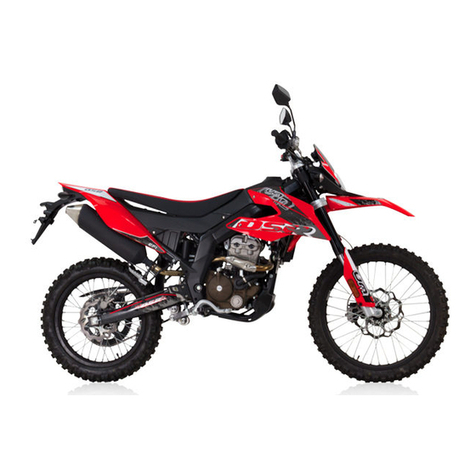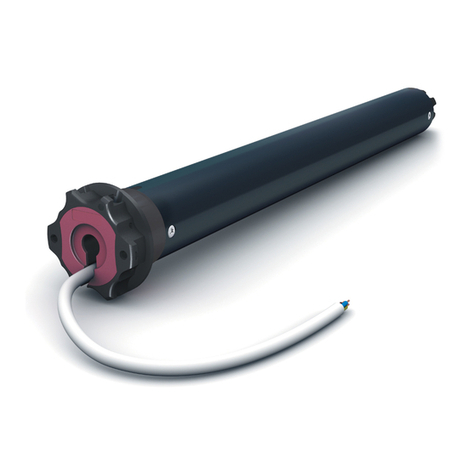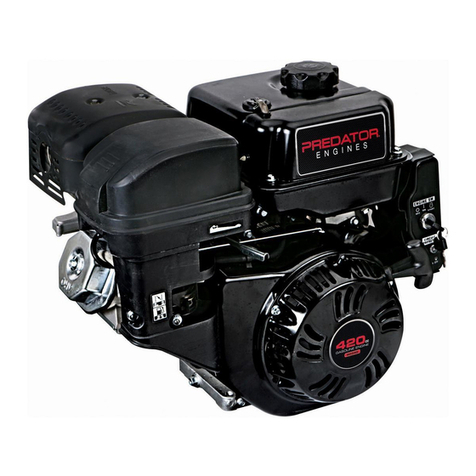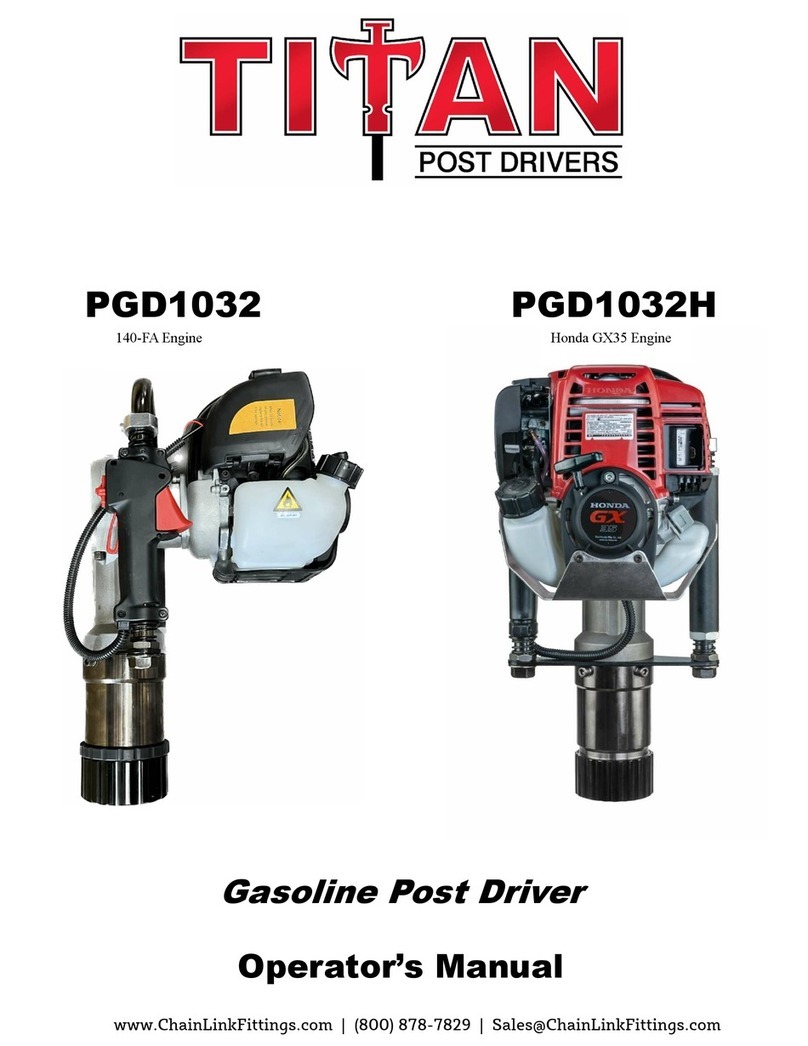starter motor support, the fixing points of the engine and the engine mount of the
aircraft frame. For starter wires, we suggest you to use a minimum diameter of 8
mm even for the positive and the negative.
When installing the Ducati regulator, used on our engines, the external part of the
engine regulator must be earthed by a wire to be screwed to one of the two holes
on the regulator; the wire can be directly connected to the negative terminal of the
battery or can be connected with the engine mount, being sure you have respected
what written before.
The ignition system consists of the following elements: stator, flywheel, pick-up,
ignition coils with integrated power module, spark plug wires, spark plugs and spark
plug connectors, rectifier/voltage regulator.
The electrical system is by Ducati, with the exception of spark plugs and their wires.
The control values are shown on the table attached to this document.
The gap (distance) between the positive electrode and the mass of spark plug,
should be between 0.50 and 0.45 mm. With values higher or lower, the proper
functioning of the engine can be affected. Spark plugs should be replaced every 50
hours.
Our engines use spark plug wires resistive type, silicon insulation. Please try to avoid
friction and/or contact the AT cables with metal surfaces or with high temperatures,
which could damage the insulation. To further eliminate the noise induced radio
devices, we recommend the using of spark plugs or resistive connectors 5 Kilo Ohm.
During the pre-flight, always check the cables conditions and electrical connectors.
The battery placement must be carried out as far as possible from the engine,
subject to the available space; the vapors released (while charging) are corrosive,
and they could cause damage to engine components.
To properly connect the voltage regulator, use the following guidelines: the two
wires (yellow and yellow-black) coming out from the wheel, must be connected in a
stable manner with the two pins marked "GG" on the voltage regulator. Two other
pins marked with the letters "RB +" start from the voltage regulator: you can either
use one or the other for charging the battery. It is important to have a switch that
allows to disconnect when the engine is off. Never disconnect for any reason, the
battery charging cable while the engine is running.















